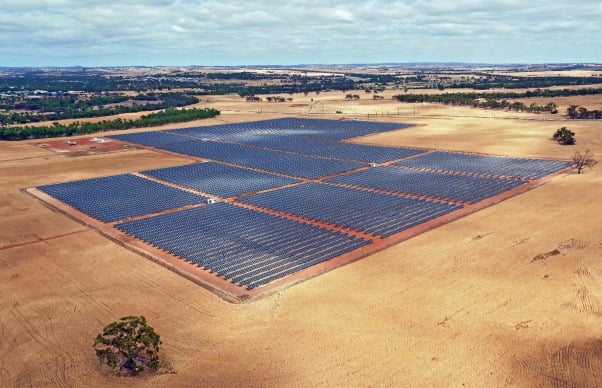
Plans for a 50GW hybrid solar PV and wind project in Western Australia have progressed, with project developers Western Green Energy Hub (WGEH) and the Korea Electric Power Corporation (KEPCO) signing a new collaboration agreement yesterday (2 September).
The new collaboration agreement sets out a detailed plan for pursuing a full feasibility study to execute stage one of the project’s development. Stage one of the project is expected to generate around 6GW of wind and solar PV power, alongside 330,000 tonnes per annum of green hydrogen.
Try Premium for just $1
- Full premium access for the first month at only $1
- Converts to an annual rate after 30 days unless cancelled
- Cancel anytime during the trial period
Premium Benefits
- Expert industry analysis and interviews
- Digital access to PV Tech Power journal
- Exclusive event discounts
Or get the full Premium subscription right away
Or continue reading this article for free
The new agreement will advance project engineering and cost modelling. It will also involve collaborative engagement with key Korean and Australian authorities and potential sources of additional project support.
Additionally, it will support the integration of these companies into the project’s development, covering aspects such as design, technology, construction with service providers, and potential off-takers.
Ray Macdonald, CEO of WGEH, said the project could help position Australia as a major participant in the global green hydrogen sector, with export opportunities in Korea.
“Western Green Energy Hub stage one is potentially significant in positioning Australia as a major participant globally in the emerging green hydrogen sector, as well as contributing to meet emerging demand in the Korean marketplace,” Macdonald said.
“Progressing a feasibility study with KEPCO, which is a proven global performer with large-scale infrastructure projects, and with its extensive national and international network, is invaluable to realising this potential.”
WGEH is set to be larger than Connecticut, US
The Western Green Energy Hub will be constructed in the southeastern region of Western Australia, covering an area of over 15,000 square kilometres—larger than Northern Ireland or the US state of Connecticut. The consortium states that the region has an ideal daily pattern for renewable energy development, with consistently high levels of solar and wind energy.
The hub would be built in phases to produce up to 3.5 million tonnes of zero-carbon green hydrogen or 20 million tonnes of green ammonia each year, which would be provided domestically and internationally.
A consortium including Hong Kong-based InterContinental Energy and renewables developer CWP Global proposed the mega project. These companies are also behind the 26GW Asian Renewable Energy Hub, which Australia’s federal government rejected in 2021 due to its environmental impacts.
Mirning Green Energy, a wholly owned subsidiary of the Mirning Traditional Lands Aboriginal Corporation, will have a “meaningful carried equity stake” in the project and a permanent seat on the WGEH consortium board.






